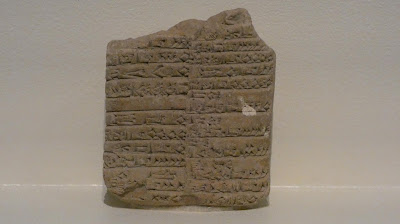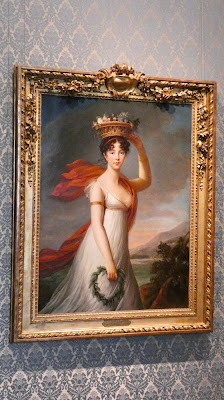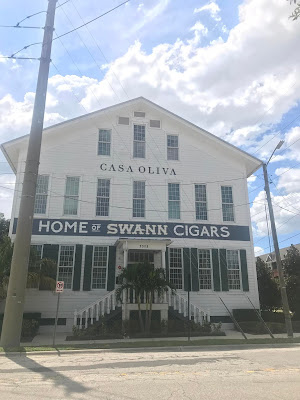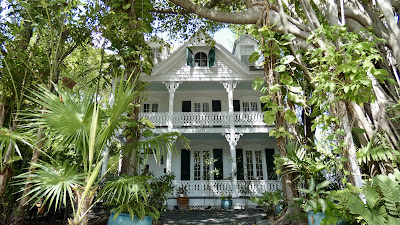Having read Un monstre est là, derrière la porte when it came out, I was delighted to read its English translation, There's a Monster behind the Door, as it's the first novel from Reunion Island to have been professionally translated and independently published in English. It's been beautifully translated by Karen Fleetwood and Laetitia Saint-Loubert, and I enjoyed reading the translation as much - if not more - than the original.
More than just a novel, There's a Monster behind the Door is a window into the heart and soul of Reunion Island, and its publication in English marks a significant milestone for the island's literary scene. In this exclusive interview, which I've translated myself from the French, author Gaelle Belem discusses the impact of the translation, the motivations for her writing, and her hopes for the book's reception. She also offers an insight into her creative process, the contribution she would like to make, her commitment to Reunion, and her belief in the power of literature to connect and inspire.
 |
| cover of There's a Monster behind the Door |
There's a Monster behind the Door is the first novel from Reunion Island to be translated into English. How does it feel to see it published? Has it changed your perspective on your own work? Do you have any specific fears or expectations about it?
I'm not proud that my novel has been published in English; I'm proud that literature from Reunion is finally being exported. I still have the same doubts and worries about my writing. For me, the most important thing, more than any kind of recognition, is to help people understand the complexity of Reunion and to portray it as accurately as possible.
Were you involved in the translation process? If so, how? Have you read the translation, and what are your thoughts on it?
While the book was being translated there were several email exchanges and a meeting in Paris between one of the translators, Laetitia Saint-Loubert, and myself. Overall, both translators, Karen Fleetwood and Laetitia, worked completely independently, with my full faith. Laetitia has lived and taught in Reunion, and is a specialist in translating books from the Caribbean and Indian Ocean. Her experience and skills explain why I intervened very rarely, and then only to clarify the meaning of a Reunion Creole word or expression.
I think their translation is excellent. They have fully preserved the letter and spirit of the original text.
Laetitia and Karen have earned my eternal gratitude and respect.
What initially inspired you to write There's a Monster behind the Door, your first published novel? How did the idea come about - through a particular event or personal experience? Were there any specific references or authors who influenced its creation?
The book was always there, in the making. I just had to look around me, read the newspapers, and listen to the people of Reunion to get the idea for this book. It was crucial for me to give a voice and visibility to those who have very little.
As a writer, my inspiration is wide ranging and doesn't come from literature alone. While the realism of Zola and Maupassant formed my literary foundation, the stylised violence of a Park Chan-Wook or Tarantino film, or the music of [local band] Ousanouva added colour to my debut novel.
 |
| Gaëlle Belem |
Was there a message you sought to convey with your novel, especially to those discovering Reunion Island for the first time through the English translation? Do you have any expectations or a particular readership you wanted to reach?
I have an unconditional love for my readers, whoever they may be, and for whom my novels are intended to be ambassadors of Reunion. Every page reminds us that the island is a fabulous, multilayered melting pot – a juxtaposition of sublime landscapes, tolerant and mixed-race communities as well as varied food; however it also has its dark side, its poorly healed wounds, and the stigmata of violent colonialism.
There's a Monster behind the Door seems to be deeply rooted in Reunion. Do you think it could resonate with an international audience, despite these cultural specifics? Are there any cultural aspects that you hope to convey more than others through this translation? What do you want English-speaking readers to understand about the island and its social realities with your book? In your novel, you often paint a bleak picture of Réunion. Was this a deliberate attempt to counter the idyllic image we might have of the island, or was it a narrative necessity to explore the psychological depths of your characters?
I have no problem with horror. Reunion Island has no shortage of it. "So what?" I'd like to say. Every paradise has its serpent.
Reunion is a mixed tropical paradise, fraught with violence, multiple historical traumas and a highly ambiguous relationship of dependence-inferiority complex-hate-dream of emancipation with regard to mainland France. It's a land of mountains and paradoxes! The island is undoubtedly the most beautiful in the world, but its history is definitely not! A novel is an open conversation with the reader. In this clear, uncompromising conversation, I wanted to express the beauty and ugliness of the island, yet always with humour and a deep affection for the characters.
Do you believe that literature contributes to a better understanding of Reunionese culture?
Yes, I do. Literature is the screen through which we can view the people and their way of life. In a world where travel is increasingly criticised for its high carbon footprint, literature allows us to explore history, places, and the psyche of individuals. Reading about Reunion provides an opportunity to do just that.
 |
| cover of original novel in French |
What are your future writing projects? Does the possibility of expanding your readership through translation influence your approach to these future projects?
Writing is not a project. It's a way of life, a permanent trance. Even when I don't have a pen or keyboard in front of me, I'm nothing but scribbles and writing in my mind. Beyond writing, what truly matters to me is to serve Reunion through a humanist and socially responsible approach. To project oneself means being useful to others. If my books make this possible, so much the better. Now we just have to open the door wide and let the monster jump out.
There's a Monster behind the Door was published on 10th October by new independent Irish publisher Bullaun Press. Many thanks to them for the review copy.
Further reading:





































































